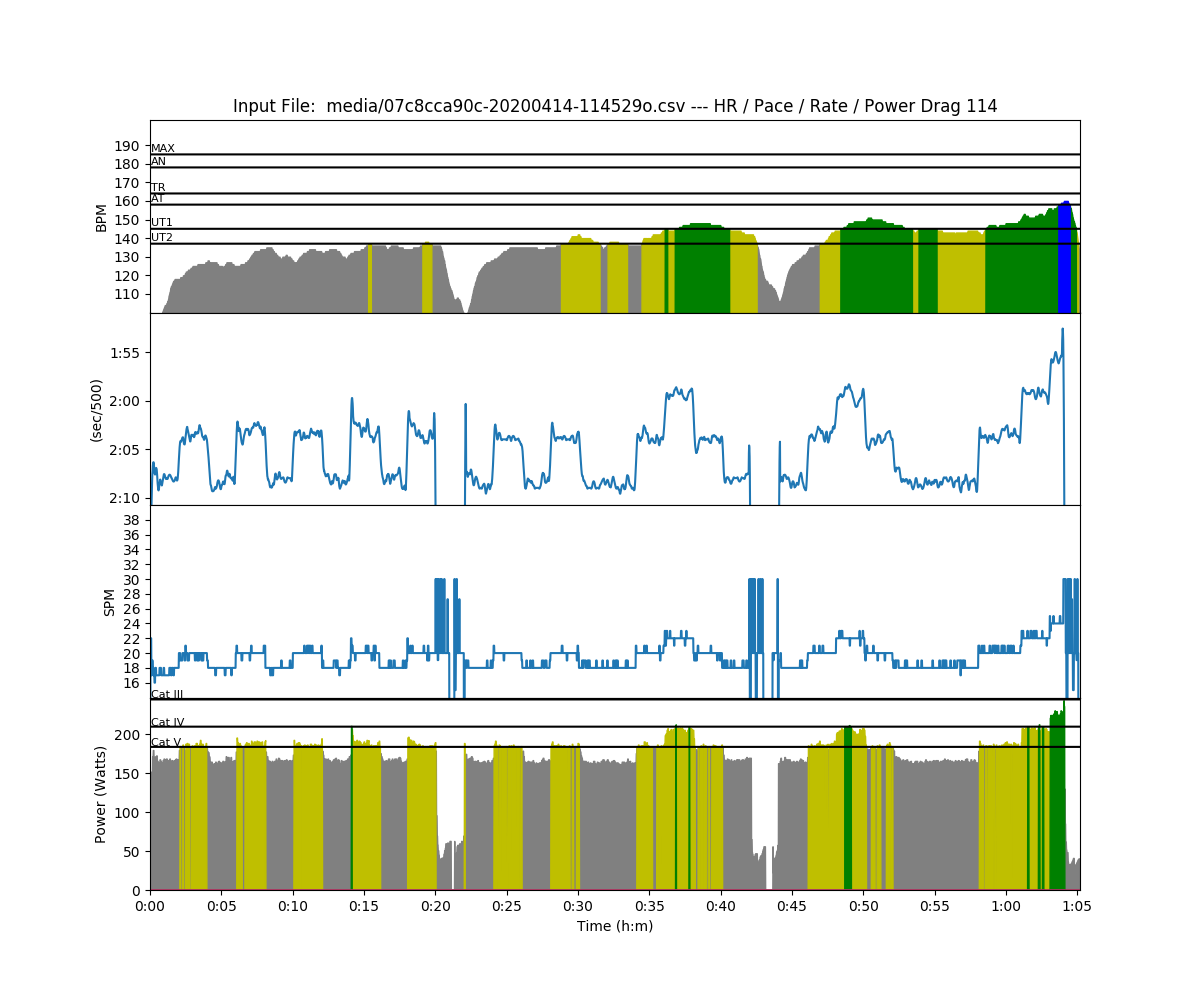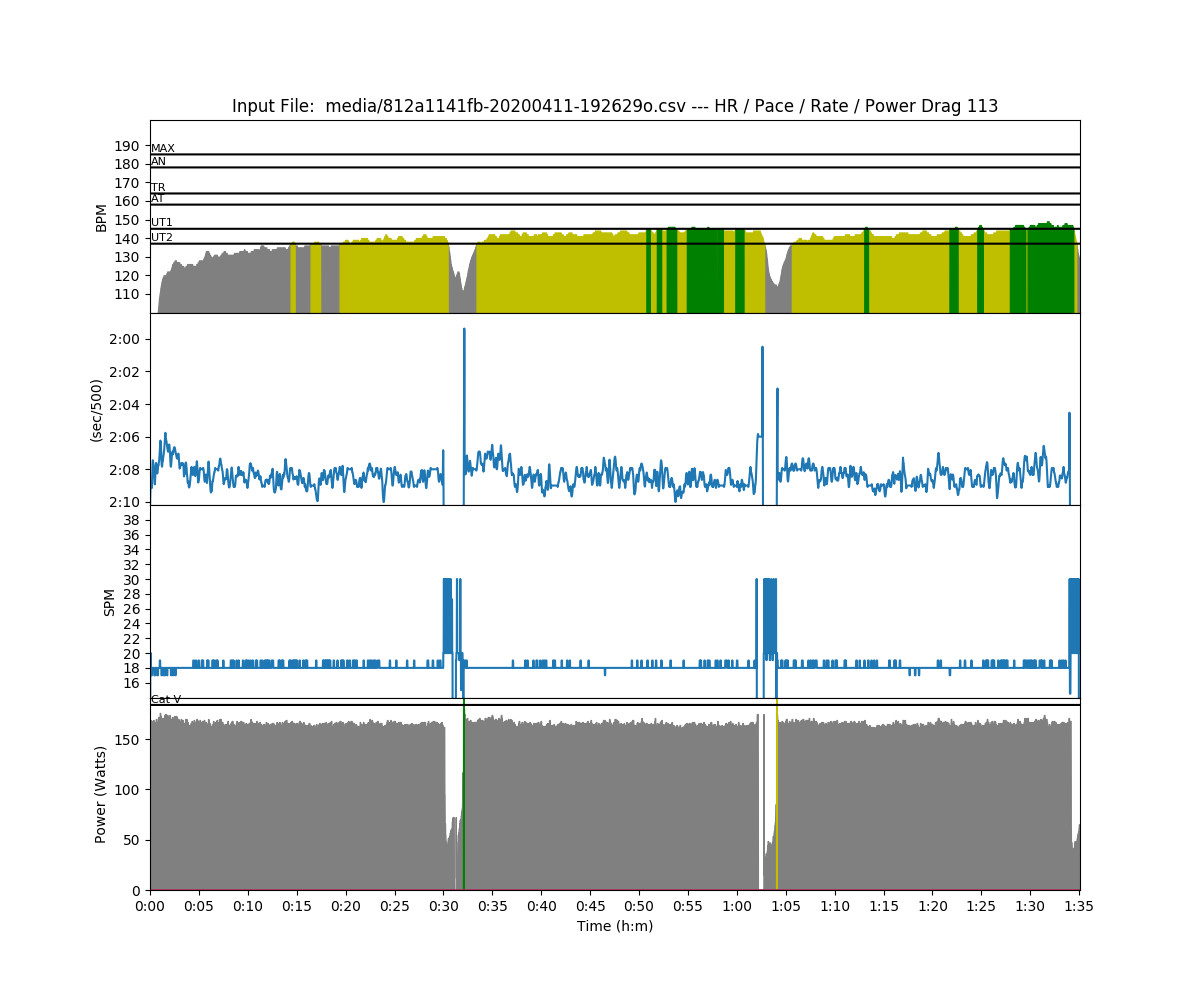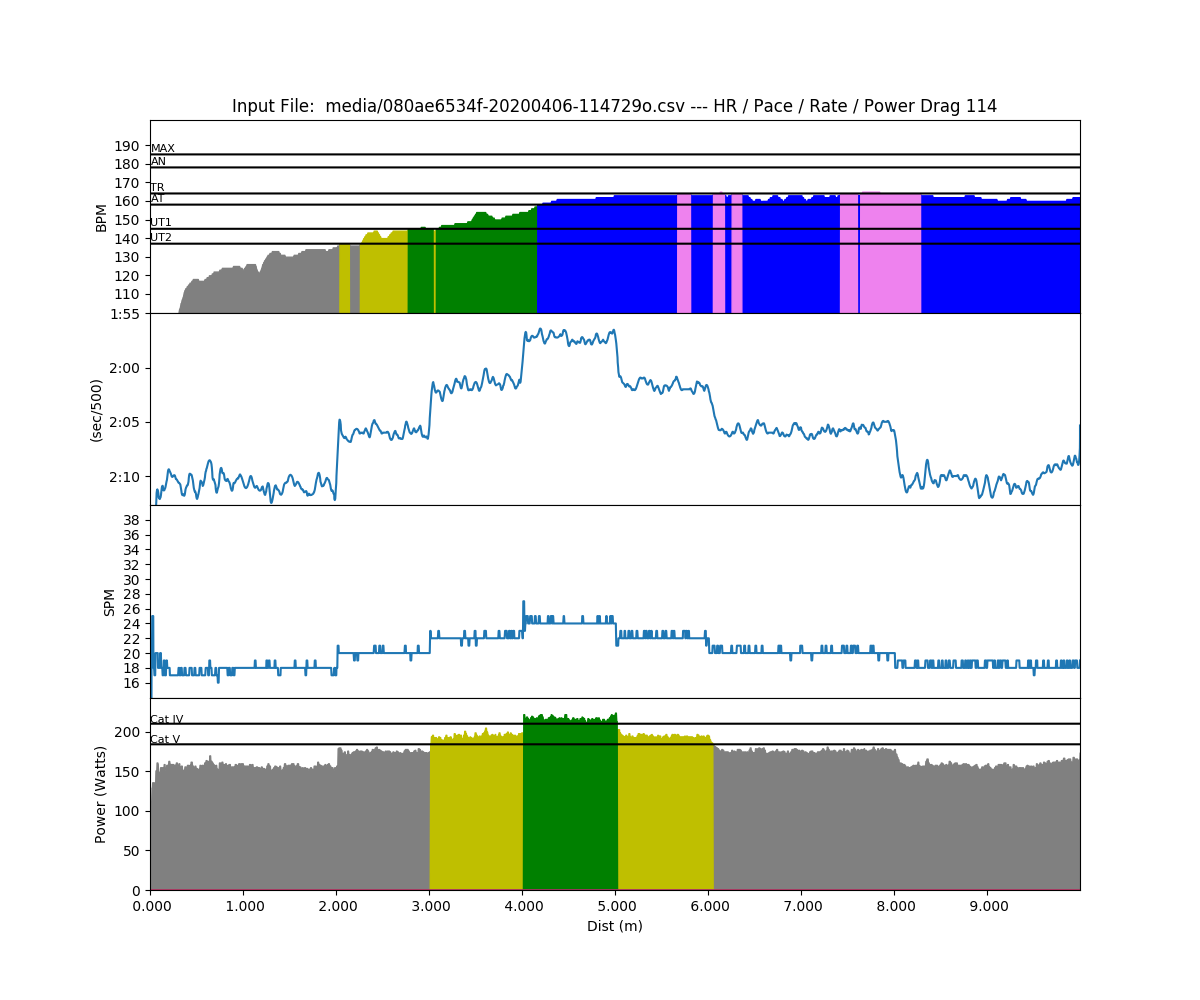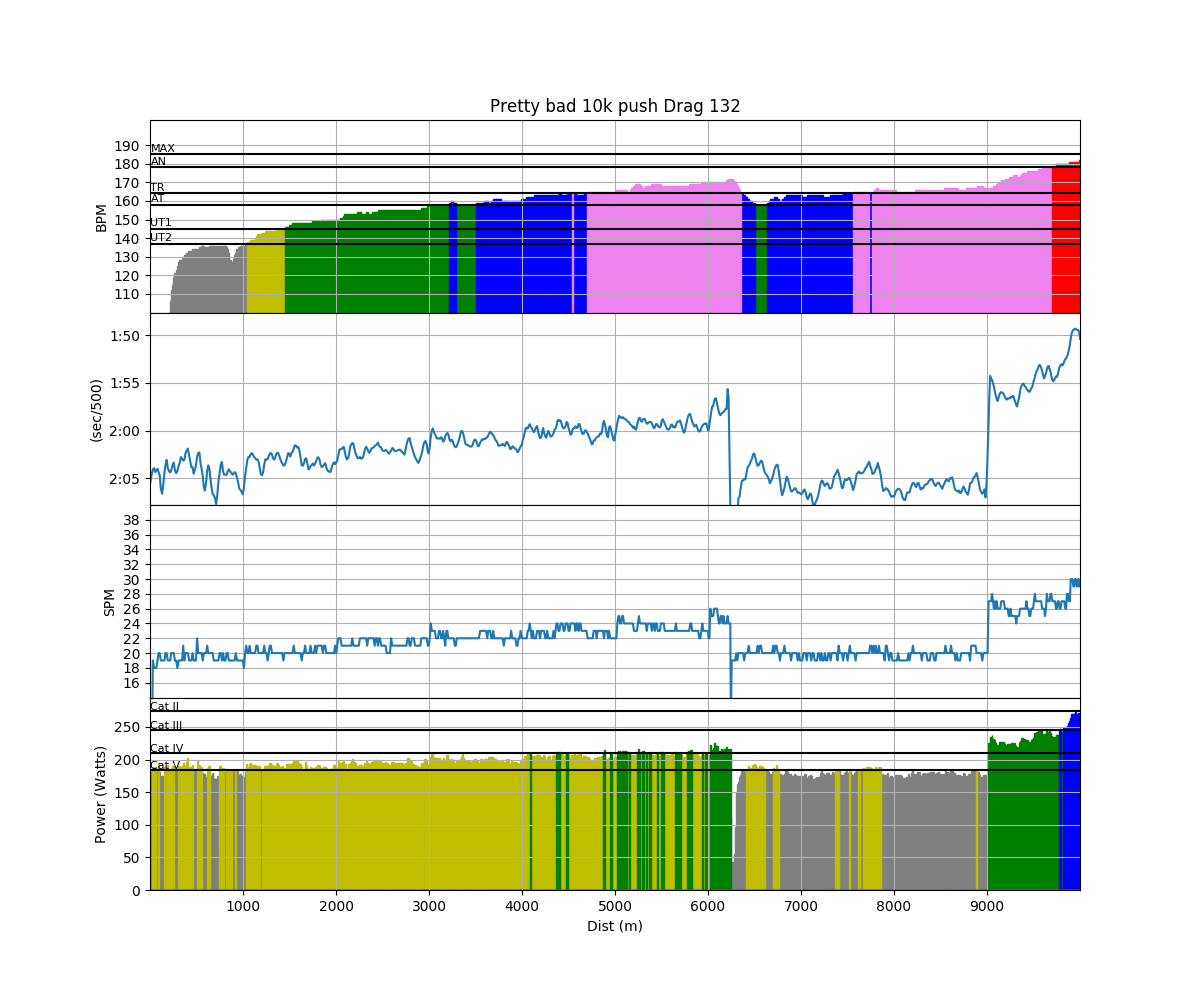I posted a workout on the facebook page for the Stuck At Home Rowing Club, and someone made the mistake of showing the slightest interest in what I was doing. Now I will make her regret it.

Q: What kind of low intensity pieces am I doing?
A: Let’s start by defining low intensity. The terms Low Intensity and High Intensity are generally used in the context of a polarized training, so let’s start there. Polarized training applies the knowledge that there are different systems to power your muscles, depending on how hard you are working.
Here it is in graph form, from this article

So, on the bottom of the plot is how hard you are working as a percent of your maximum power output. Think of that as your VO2Max, or when your heart rate is very close to it’s maximum. As fast or faster than 2k race pace. On the vertical are two different things. The graph that starts high at low power output is the percentage of the energy expended that comes from metabolizing fat. The other curve, that starts low and climbs is how much power you get from carbohydrate (glucose/glycogen).
Where the cross over occurs can be moved by the kind of training that you do. If you do a lot of training below the cross over point, you can increase your ability to metabolize fat and essentially push the crossover gradually to higher and higher powers. The opposite can happen too, if your training focuses on more power and sprinting work, which stimulates the sensory nervous system, the cross over point can move down.
OK, so what does this have to do with polarized training?
Well, to get faster over typical 1K to 6K race distances, we need to have both power and endurance. But we need a way to organize the training so that we get the benefit of power development, while minimizing the how much we can move the cross over point to the right. Luckily, a lot of people have done a lot of good work to figure this out. One of them is Stephen Seiler, and wrote a great survey paper about it. It seems the an optimal approach is to put in about 80% of your training time at low intensity and 20% above. This has been shown to be a good ratio for elites who train a ton. and for recreational athletes (like me).
Great, so that why polarized training works, but what does low intensity mean?
Low intensity means that you are training at a power below your cross over point. There are a bunch of ways to figure out what that power is. The key concept is that it is much better to make the mistake of going too easy than going too hard. I have known this intellectually for 7 years and I still get it wrong all the time. I have such a stubborn belief that I have to push as hard as possible that I am always sabotaging myself. Don’t be an idiot like me. go easy and you will be miles ahead.
So, with that caveat, here are a few ways to test whether you are going slow enough.
- RPE: Stands for Rate of Perceived Exertion. If you care, it’s a fancy scale from 1 to 17, but what it means is if you can’t speak in full sentences while you are exercising, then it isn’t low intensity.
- Heart Rate: My favorite, but a pain in the neck. If you keep your workout below 75% of you maximum heart rate, you are doing it right. Some people think 70%. But to do this you need to get an idea what your max heart rate is, and that has it’s own complications, which I helpfully described here.
- Lactate Measurement: Incontrovertible evidence, but a massive pain in the finger. You can measure directly whether you are using fat or carbs by measuring the by product of carb respiration (which is lactate) as it accumulates in your blood. If it is below 2mmol, then you’re doing it right. The challenge to this method is that you have to stab your finger and dab the blood on an expensive test strip that you plug into an expensive meter. I did this for a year or so, and still go back and do it ever once in a while, but it’s way to master rower nerd-core for daily use.
- 20-25 seconds slower than 2k pace. Right now, if I had the guts to do a 2k test, I would probably pull a 1:45 split. I do my steady state between 2:05 and 2:10. This isn’t a great method, but if you are doing your steady state 10 seconds slower than race pace, then it isn’t low intensity.
So, the main thing is to make sure that your low intensity workout is low intensity enough, what else matters.
- Duration: More is better. And then even more. Miles make champions. Since going harder is counter productive, your main variable to get better is more time. If you are just getting started, then 30 minutes will be beneficial, and over time, the improvements will start to slow down and you will need to add more time to get more gains in endurance. I find that I can make very slow gains with 60 minute sessions and much better progress with 80, but having a life keeps me from being able to do that volume consistently.
- Stroke rate: I read the wolverine plan years ago and it made a ton of sense to me. The basic idea is to keep the amount energy you put into a stroke about the same, and scale down the stroke rate to do low intensity training. If you think about it, that means that the drive phase of your stroke stays the same in duration whether you are racing or cruising, but you will take far fewer strokes per minute, so you go slower. To be fancy you can can call it Work per Stroke. So, I do my low intensity training at low rates, maybe 60% at 18 spm, 30% at 20spm, 10% at 22spm and above.
- Breaks: 80 minutes is a looong time. I’ve read a bunch of stuff that recommends breaking up long rows into 20 to 30 minute chunks so that you can stretch, adjust and hydrate. So, I do almost all of my low intensity work in 20 minute work / 2 minute rest format. I will sometimes do a continuous half marathon to prove I can do it, but it is much more civilized to take short breaks and I think it helps to avoid back injuries.
Here are few example workouts
3 x 20′ / 2′ L4

3×30’/2′ steady state at 165W

And here’s an example of a workout that I pushed too hard and ended up in the “black hole”. To intense to build endurance and not intense enough to build power.

So, a long answer to a short question.





















